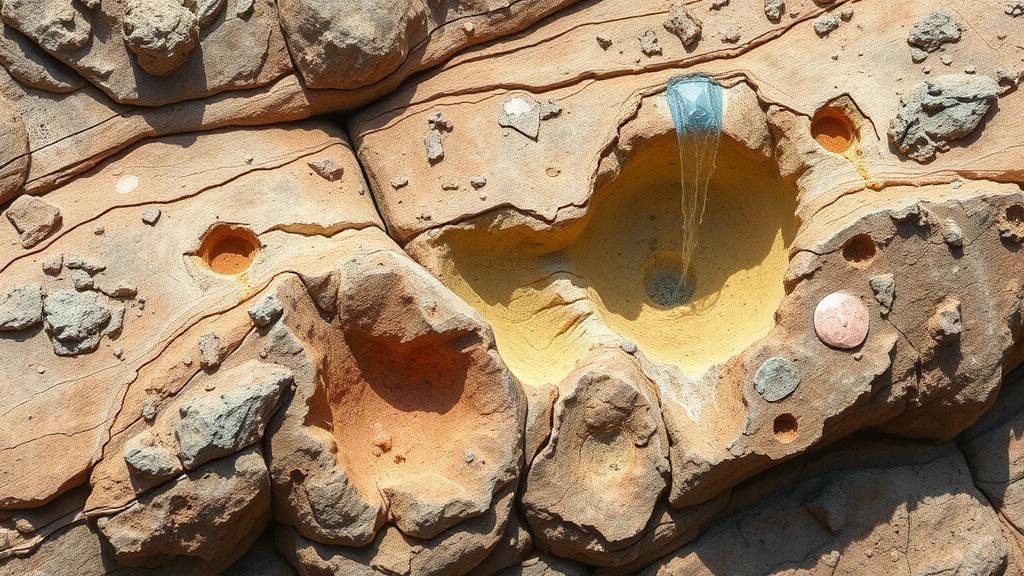Spotting Breccia Pipes as Potential Hosts for Copper Mineralization
Spotting Breccia Pipes as Potential Hosts for Copper Mineralization
Breccia pipes have emerged as significant geological formations that can serve as prime hosts for copper mineralization. Understanding how to identify these features is crucial for geologists and mining companies in the search for economically viable copper deposits. This article will explore breccia pipes formation, characteristics, and the indicators of potential copper mineralization within them.
What are Breccia Pipes?
Breccia pipes are geological structures typically formed by the collapse of rock strata into a cavity, resulting in a mass of angular rock fragments. e formations are commonly associated with volcanic activity, hydrothermal processes, or tectonic upheaval. The result is a fragmented rock matrix that often contains a variety of mineralized materials.
Characteristics of Breccia Pipes
Breccia pipes display several distinguishing characteristics, which make them relevant to mineral exploration:
- Angular Fragments: The rock fragments are typically angular and vary in size, making them easily identifiable.
- Matrix Composition: The filling material within the breccia can include calcite, quartz, and, importantly, copper-bearing minerals.
- Host Rock Interaction: Breccia pipes often intrude into host rocks, indicating a potential alteration zone that enhances mineralization.
Geological Formation Process
The formation of breccia pipes is often linked to explosive volcanic activity or significant tectonic shifts. Two primary processes contribute to breccia formation:
- Hydrothermal Activity: Hot fluids from the Earth’s crust can mobilize metals and minerals, leading to deposition within the breccia matrix.
- Collapse Structures: The collapse of rock layers during volcanic eruptions or ground subsidence can create voids that subsequently fill with mineral-rich fluids.
Indicators of Copper Mineralization
Identifying potential copper mineralization within breccia pipes can be achieved through various geological indicators:
- Chalcocite and Bornite Presence: The identification of specific copper minerals like chalcocite (Cu2S) or bornite (Cu5FeS4) within breccia material is a strong indicator of copper anomalies.
- Alteration Patterns: Look for signs of hydrothermal alteration such as sericitization or chloritization, which often accompany copper deposits.
- Geophysical Anomalies: Magnetic surveys may reveal subsurface structures that correlate with breccia pipes and potential mineralization.
Case Studies and Real-World Applications
Several mining companies have successfully utilized breccia pipes in their exploration and extraction strategies:
- Morenci Mine in Arizona: The Morenci Mine is known for its integration of breccia pipe models with advanced geophysical techniques to locate new deposits of copper.
- Chuquicamata in Chile: This site demonstrates how breccia pipes can host massive deposits of copper ore, owing to its unique geological structure and mineralization processes.
Challenges in Identifying Breccia Pipes
While the potential for copper mineralization in breccia pipes is significant, several challenges may arise:
- Variable Depths: Breccia pipes can occur at varying depths, which makes identifying surface indicators difficult.
- Complex Structures: The irregular geometry of breccia pipelines may pose challenges for modeling and predicting where mineralization occurs.
- Environmental Considerations: Regulatory frameworks surrounding mining may complicate exploration efforts.
Actionable Takeaways
To effectively identify and evaluate breccia pipes as potential hosts for copper mineralization, geologists and mining companies should:
- Conduct comprehensive geological mapping to identify breccia structures.
- Use geophysical methods such as magnetic and electromagnetic surveys to locate subsurface features.
- Integrate geochemical assays to test for the presence of significant copper minerals within breccia matrices.
- Adopt a multidisciplinary approach involving geology, geophysics, and geochemistry for complete assessment.
By understanding the characteristics and indicators of breccia pipes, stakeholders in mineral exploration can enhance their strategies for discovering economically viable copper deposits.



